Jewelers have a special fondness for VVS diamonds, but does that automatically mean you should share the sentiment? This article aims to provide you with a comprehensive understanding of this often-misunderstood clarity grade.
VVS diamonds are fervently endorsed by certain jewelers due to their remarkable clarity. However, it’s important to note that this level of clarity surpasses what is necessary to appreciate the diamond’s beauty.
What exactly does VVS signify? It represents a pinnacle of perfection. Just slightly below the flawless and internally flawless grades, VVS diamonds are incredibly close to being flawless. They occupy the upper echelon of diamond grades and tend to be quite expensive.
Naturally, their price falls short of flawless and internally flawless diamonds. Nevertheless, to the unaided eye, VVS diamonds appear almost indistinguishable from flawless diamonds.
Diamond Price Chart
DESIGN YOUR OWN ENGAGEMENT RING: START WITH A SETTING OR START WITH A DIAMOND. IT’S REALLY UP TO YOU!
| Shape | Top Quality D/E, FL/IF | Our Recommendation G/H, VS2/SI | The Lower End I/J SI1/SI2 |
|---|---|---|---|
| Round | $23,200 | $7,710 | $6,100 |
| Princess | $15,200 | $6,280 | $5,000 |
| Cushion | $15,790 | $5,870 | $3,730 |
| Emerald | $16,050 | $7,760 | $5,140 |
| Oval | $18,950 | $7,390 | $5,760 |
| Pear | $17,800 | $7,580 | $5,710 |
| Marquise | $21,320 | $9,210 | $5,150 |
| Radiant | $20,100 | $7,020 | $4,100 |
| Asscher | $19,610 | $7,720 | $4,360 |
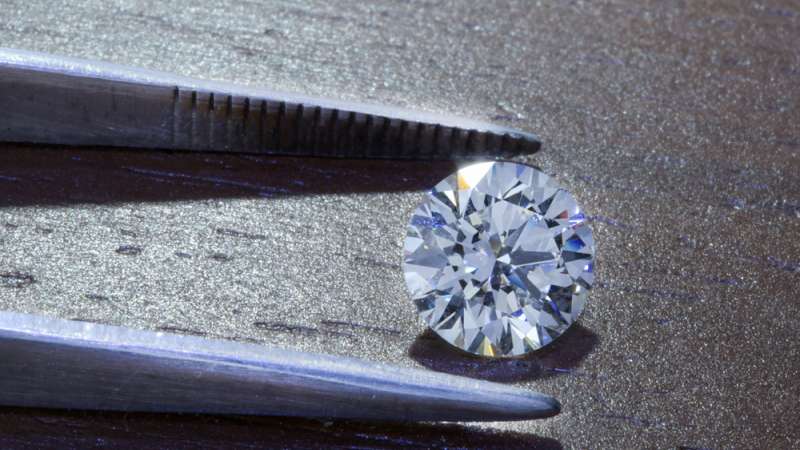
What Does VVS Mean?
Let’s delve into the technical details for a moment – VVS is an acronym for Very Very Slightly Included. This signifies that a VVS diamond possesses only a few minuscule inclusions that are challenging to observe, even under 10x magnification. On the clarity scale, VVS diamonds are just one step below internally flawless diamonds.
Among the four critical Cs of diamonds, clarity plays a vital role. It assesses the presence of inclusions and blemishes. Diamonds without any visible inclusions or blemishes under 10x magnification are classified as flawless (FL). Internally flawless (IF) diamonds exhibit only a few minor blemishes under the same magnification. Directly below FL and IF grades, we find VVS diamonds. A diamond earns the VVS grade when its inclusions are so minute that they are difficult to locate and observe under 10x magnification. As you can see, VVS diamonds are essentially similar to flawless diamonds but come at a slightly lower cost.
VVS diamonds can be found in most jewelry stores, depending on their inventory and the diamond’s shape. Reputable online jewelry stores often provide high-quality images of all the diamonds in their stock. It is advisable to purchase VVS diamonds from these vendors as you can closely examine an image before making a purchase. Additionally, online vendors tend to offer more competitive prices compared to physical jewelry stores due to lower overhead costs.
Before you make a decision to buy a VVS diamond, it’s important to note that the VVS grade consists of two subcategories: VVS1 and VVS2. VVS1 diamonds have fewer inclusions compared to VVS2 diamonds. Consequently, VVS1 diamonds are priced higher than VVS2 diamonds. The higher cost of VVS1 diamonds is justified by the fact that their inclusions are not visible under 10x magnification.
On the other hand, VVS2 diamonds possess inclusions that are barely detectable under 10x magnification. However, with thorough examination, these inclusions can still be found. In general, VVS2 diamonds tend to have more prominent and darker inclusions compared to VVS1 diamonds. For instance, a VVS2 diamond might have an inclusion closer to the center of the table, while a VVS1 diamond could have inclusions closer to the edge. Both diamond grades appear nearly flawless to the naked eye.
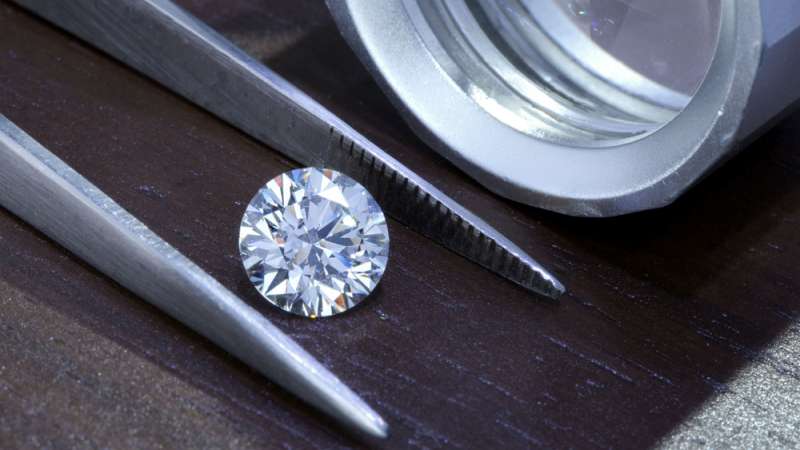
VVS Diamond Clarity
VVS, which stands for Very Very Slightly Included, holds the third position on the clarity scale, just below internally flawless and flawless diamonds. The VVS diamond grade is further categorized into two subcategories: VVS1 and VVS2.
VVS diamonds possess such minimal blemishes that even a professional jeweler using a 10x loupe would struggle to detect them. This implies that all VVS diamonds are considered eye-clean, meaning you would find it challenging to spot any imperfections when viewing the diamond without magnification.
Considering that inclusions and blemishes are exceptionally difficult to observe with the naked eye, it is recommended to opt for VVS2 diamonds. Why? Because the price difference between a VVS1 and VVS2 diamond of the same size can amount to several hundred dollars.
For instance, you can discover a 0.7-carat VVS2 diamond priced around $1700, whereas a 0.7-carat VVS1 diamond would cost you approximately $2000. Therefore, unless your intention is to scrutinize the diamond under a 10x jeweler’s loupe, there is no practical reason to choose a VVS1 diamond.

What Are VVS1 Diamonds?
On the diamond clarity chart, VVS1 diamonds hold a higher rank than VVS2 diamonds. This particular grade of diamond comes closest to achieving internal flawlessness, which is an extremely rare occurrence. The blemishes and inclusions present in VVS1 diamonds are nearly imperceptible under 10x magnification, requiring jewelers to employ powerful microscopes to identify them.
When grading a diamond, laboratory professionals examine several aspects of its inclusions. Firstly, they consider the size of the inclusion. If an inclusion is larger and visible under 10x magnification, the diamond will receive a lower grade than VVS1.
The number of visible inclusions also plays a significant role in the grading process. The greater the number of easily observable inclusions (regardless of the overall count), the lower the diamond’s grade.
The location of the inclusions is another crucial factor that graders closely assess. Inclusions situated directly beneath the diamond’s table are more noticeable compared to those found within the pavilion and crown facets. Consequently, if a diamond has inclusions positioned beneath the table, it will receive a lower grade.
The color of the diamond also holds immense importance in the grading procedure. The darker the diamond’s color, the lower its grade will be.
Inclusions within VVS1 diamonds are not visible to the naked eye. In fact, VVS1 diamonds appear virtually identical to flawless diamonds when viewed without magnification. Only when examined under a 10x microscope can the blemishes be observed.
What Are VVS2 Diamonds?
As you may have already surmised, VVS2 diamonds are positioned just below the VVS1 grade. Inclusions within VVS2 diamonds are barely discernible under 10x magnification, requiring the trained eye of a professional to detect them. Even professionals need sufficient time to locate imperfections on VVS2 diamonds.
Similar to VVS1 diamonds, the grading of VVS2 diamonds considers factors such as the size, number, color, and location of inclusions. The primary distinction between VVS1 and VVS2 diamonds lies in the visibility of inclusions on the crown when examined under 10x magnification. To an average person, VVS2 diamonds appear practically identical to both VVS1 and flawless diamonds.
Professional diamond graders utilize gemological microscopes to identify inclusions within VVS2 diamonds. If the grader observes a pattern of several separate spots akin to VVS1 in size, the diamond will be assigned a VVS2 grade. This is a task that cannot be accomplished using a jeweler’s loupe, as it lacks the necessary level of magnification.

What To Look For When Buying VVS Diamonds
One of the most common mistakes people make when purchasing diamonds is acquiring a diamond with a clarity grade that exceeds their ability to appreciate it. Many individuals commit this error in the pursuit of a perceived “good investment.”
However, it is essential to recognize that diamonds are simply retail products and should not be solely regarded as investments, especially if the intention is based on resale value alone.
In terms of clarity, there is no added value in purchasing a higher clarity diamond that appears identical to a lower graded diamond when viewed with the naked eye. The only distinction lies in the significantly higher cost associated with a diamond of higher clarity—often amounting to thousands more. This is why it is advisable to seek a diamond with a lower clarity grade that still appears visually clean without magnification.
When examining a VVS diamond or any other diamond, it is crucial to inspect it with high magnification. This approach allows for the observation of inclusions and blemishes that would typically go unnoticed.
If you wish to avoid the need to become an expert in diamond appreciation, hiring a professional to evaluate the diamond for you is a viable option. Although it may involve some expense, their honest opinion on whether the diamond is worth purchasing or not can provide valuable guidance.
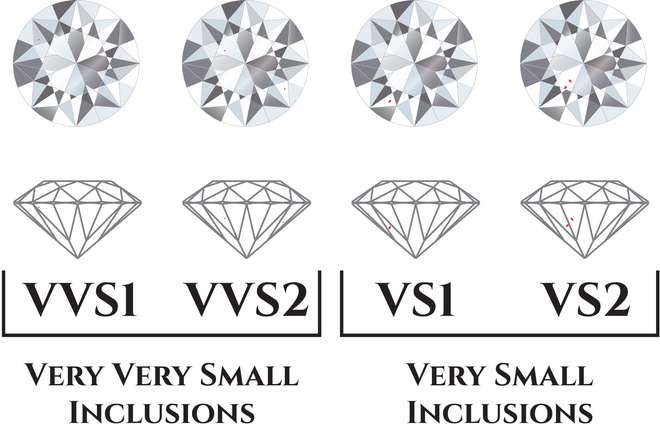
What’s The Difference Between VVS and VS Clarity?
VVS diamonds surpass VS diamonds in terms of clarity grade, exhibiting notable distinctions between these two diamond types.
These differences encompass clarity, size, nature, number, and location of inclusions. VS diamonds tend to have a greater presence of inclusions and blemishes compared to VVS diamonds. Furthermore, they are typically larger, darker, and situated closer to the center of the diamond’s table.
The clarity of a diamond is not solely determined by the quantity of inclusions; it also takes into account their characteristics. Both VS1 and VS2 diamonds possess a relatively small number of inclusions visible under 10x magnification. Moreover, these imperfections are comparatively easier to detect compared to those in VVS diamonds, although still requiring a keen eye to spot them.
Although VS diamonds generally exhibit a higher occurrence of inclusions, this is not always the case. As the clarity grade considers factors such as size, location, color, and number of inclusions, a VS diamond does not necessarily need to have more imperfections than a VVS diamond. For instance, a VS diamond may possess the same number of inclusions as a VVS diamond but with these inclusions positioned just below the diamond’s table.
In most instances, distinguishing between a VS and a VVS diamond with the naked eye is unlikely. Both grades feature such minuscule inclusions that they appear indistinguishable unless scrutinized under 10x magnification.
VVS vs. VS Diamond Rings
Now that you are aware of the distinction between VVS and VS grade diamonds, let’s explore whether there is a disparity between VVS and VS rings. Although VVS rings generally exhibit fewer inclusions than VS rings, both appear visually identical when observed with the naked eye.
In terms of pricing, a VVS diamond ring is typically more expensive than a VS diamond ring, given that they possess the same cut, color, and carat weight. It is worth noting that two diamonds that are otherwise identical can have a price difference of $1000 or more solely due to variances in clarity grade.
While the market offers a plethora of stunning VVS diamond engagement rings, spending a substantial amount on a higher clarity grade may not be the most cost-effective decision. Our recommendation is to opt for a VVS2 or VS diamond ring, as they appear virtually indistinguishable from VVS diamonds to the naked eye. Prioritize finding a diamond that is visually clean above all else, with the clarity grade ranking as a less crucial factor. By doing so, you can allocate your budget towards more important aspects of the diamond, such as the quality of the cut.
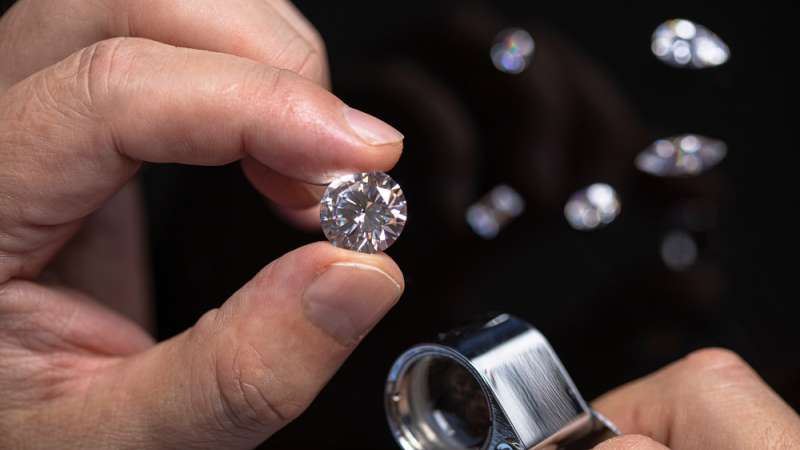
Why Buy A VVS Diamond?
There are several reasons why you might want to buy a VVS diamond. Here are just a couple:
You’re Too Busy
Shopping for VVS diamonds is remarkably straightforward, and there’s a compelling reason why. Diamonds of this grade are consistently eye-clean. When purchasing a VVS diamond online, it is highly likely that you won’t be able to detect any inclusions or blemishes even under 10x magnification. In the rare instance that you do, it will require a considerable amount of time and effort to spot them, especially with diamond cuts such as emeralds and asschers.
Acquiring a VVS diamond also eliminates the need to invest hours poring over certificates in search of a lower clarity diamond with precisely positioned inclusions to secure a favorable deal. VVS diamonds possess an appearance that is virtually flawless to the naked eye, sparing you from extensive scrutiny and ensuring a visually appealing choice.
You’re Shopping For a Step Cut
For those seeking captivating emerald or Asscher diamonds, it is advisable to focus on the clarity range of VS2 to VVS1. Step-cut diamonds, like emerald and Asscher cuts, tend to make inclusions more noticeable. Additionally, it’s important to keep in mind that larger diamonds tend to exhibit more visible inclusions.
You’re Buying A 3+ Carat Diamond
As previously mentioned, the visibility of inclusions increases with the size of the diamond. While a 3-carat VS2 round brilliant diamond can potentially be eye-clean, there is also a possibility that it may not be.
Opting for a VVS diamond eliminates the need for extensive certificate review. Furthermore, if you choose a round diamond, you will have the opportunity to inspect it in person and verify its eye-clean nature.
You Have An Aversion To Imperfections
Purchasing a diamond entails both the objective assessment of its quality and the subjective appreciation of its aesthetic appeal. Some individuals prefer diamonds without any inclusions or flaws, and that preference is entirely valid. Ultimately, how you choose to allocate your funds is a personal decision.
If the idea of presenting a diamond that is nearly devoid of internal imperfections brings you peace of mind, then it is commendable. Opting for a nearly flawless diamond is bound to make a powerful statement and enhance the significance of your gesture.
You’re In A Hurry
VVS diamonds are an ideal choice for time-conscious shoppers who prefer to bypass the arduous process of reviewing numerous diamond certificates or seeking guidance from jewelers.
While it is true that you may need to invest more in a higher clarity grade diamond, opting for VVS diamonds saves you the hassle of spending hours researching and evaluating diamonds, only to discover a prominent inclusion positioned beneath the diamond’s table.
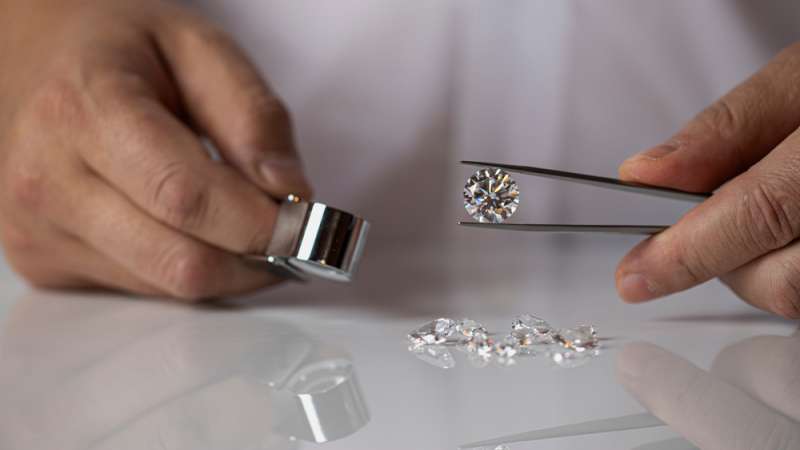
Reasons Why You Shouldn’t Buy A VVS Diamond
While you may have the financial means to purchase a VVS diamond, it may not always be the most optimal choice. Here are a few reasons why you might want to consider selecting a lower quality diamond instead.
Price
Opting for VVS diamonds, known for their near-flawless nature, comes with a significant price tag. If your main objective is to achieve brilliance, considering a VS1 or VS2 diamond can be a viable alternative. While these diamonds may possess a few blemishes, they will be exceptionally difficult to detect.
Clarity Isn’t Everything
Clarity alone cannot solely determine the fire, scintillation, and sparkle of a diamond. Factors such as the cut and color grades have a more significant impact on the gem’s overall beauty than its clarity.
The Cut Is More Critical Than The Clarity Grade
Given the paramount importance of the cut in a diamond’s ability to exhibit fire, it is worth considering allocating the additional funds you plan to spend on a VVS diamond towards acquiring a well-cut diamond. There are numerous VS2 diamonds available that offer exceptional visual appeal and are considerably more affordable than VVS diamonds.
Think Of The Color
Diamond color refers to a yellowish tint that can be noticeable throughout the entire surface of the diamond, unlike clarity, which is often not visible to the naked eye. Even in diamonds with an SI1 clarity grade, it is rare to spot inclusions without magnification. That’s why it is wiser to prioritize a higher color grade over a higher clarity grade when investing in a diamond.
Size Matters
It is not advisable to sacrifice carat weight for the sake of clarity. The visual impact of a diamond is more influenced by its carat weight than its clarity. For example, a 0.8-carat diamond will appear noticeably smaller compared to a 1-carat diamond.
Having said that, if your budget allows, it is recommended to choose a VVS diamond. However, ensure that it is well-cut, has a minimum G color grade, and no fluorescence. Additionally, aim for a diamond that is at least 1.5 carats in weight to maximize its visual presence.
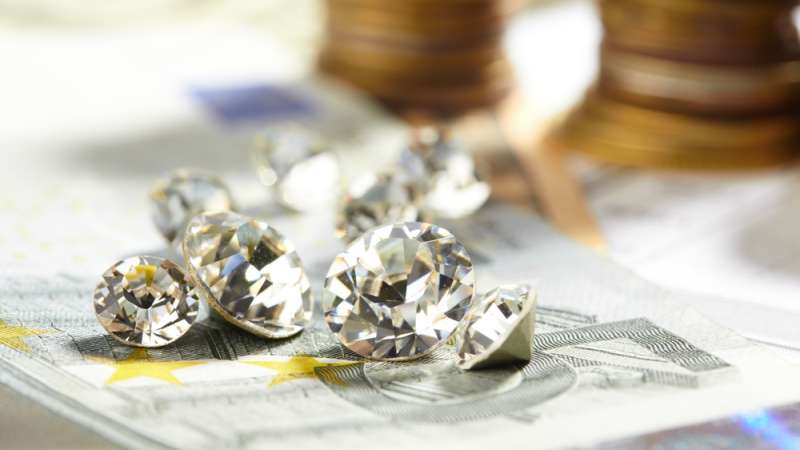
How Much Are VVS Diamonds?
The price of diamonds is determined by the 4Cs, but it should be considered in a comprehensive manner. This means that the price of a VVS diamond can vary depending on other factors such as color, size, and cut. Some VVS diamonds may be affordable due to lower color grades, smaller sizes, or poorer cuts. However, if you refer to a VVS diamond chart and price guide, you will find that well-cut VVS diamonds of significant size can be quite expensive.
Different geographic and cultural preferences also influence the demand for these diamonds. For example, in Asian cultures, there is a strong emphasis on diamonds with the highest clarity and purity. Buyers in this region often prioritize acquiring collection goods, which are colorless diamonds in the FL (Flawless) and VVS range. The premium price associated with these diamonds is considered reasonable, and many jewelers in Asia adjust the diamond’s size to fit the buyer’s budget. For most Asians, choosing a diamond with a lower clarity grade than VVS is generally not considered an option.
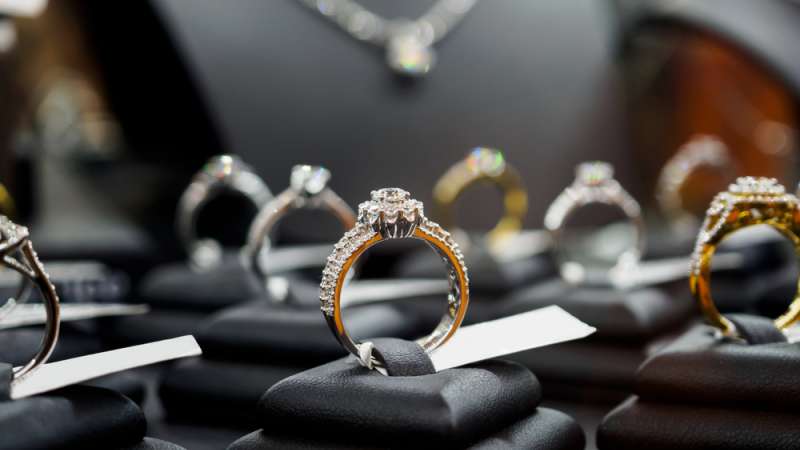
Where Can You Buy VVS Diamonds?
Nowadays, many jewelers prefer not to maintain a large inventory of diamonds and instead rely on their suppliers to provide diamonds as needed. Jewelers who do stock diamonds often opt for color and clarity combinations that are more commercially popular. This is because diamonds in the VS and SI clarity grades, along with colors in the near-colorless range, can be exceptionally beautiful and more affordable compared to VVS diamonds. Merchants often prioritize offering “lower quality” diamonds because they are more cost-effective for buyers, especially in markets where diamond size is given more importance than clarity or quality.
For those interested in purchasing VVS diamonds, they are more commonly found in upscale jewelry stores or online. Elite jewelry stores typically charge a higher premium for diamonds, while online stores tend to offer more competitive prices due to their lower operating costs. Online stores also provide detailed information about the diamonds they sell and may offer additional benefits such as trade-up guarantees. However, it’s important to note that not all listings on online stores are owned or physically possessed by the store itself. In some cases, the store may simply provide information received from their suppliers without inspecting the diamonds firsthand.
There is a slight risk associated with buying VVS diamonds online. To mitigate this, it is recommended to purchase from reputable online stores and select diamonds that are currently in stock. You can verify a store’s reputation by visiting the Better Business Bureau website or checking user reviews on platforms like Yelp and Google. Taking these precautions can help ensure a positive online diamond buying experience.

Conclusion
There are valid arguments both for and against purchasing a VVS diamond. However, in many cases, it is often more beneficial to consider diamonds in the VS or SI clarity grades.
SI1 diamonds, for instance, tend to appear flawless to the naked eye. The advantage of these diamonds is that they come at a significantly lower cost compared to VVS diamonds. Even if a diamond has minor inclusions or blemishes, they are often difficult to detect without specialized equipment.
Furthermore, opting for a lower clarity grade allows for an increase in carat weight. However, it is essential to exercise caution when selecting a VS or SI diamond. It is important to ensure that there are no visible inclusions located directly beneath the diamond table, as these may be noticeable without magnification.


